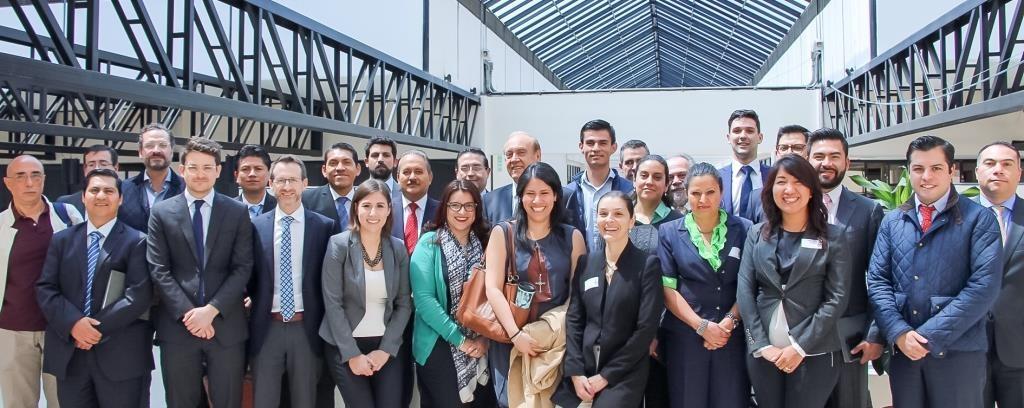
Submitted by Debra Royal on Wed, 11/09/2019 - 15:30
In the fourth of our CDBB Week 2019 International blog series telling the in-country experience of partner countries, Nayeli Mayorga, Policy officer for energy and infrastructure, British Embassy Mexico City reports on progress in Mexico.
Collaborating with the Centre for Digital Built Britain (CDBB) under the Global Infrastructure Programme has been transformational for Mexico. When we started working with experts from CDBB’s International team back in 2014, we thought persuading Mexican government officials to agree to working on a programme of national change would be extremely difficult – but it has not been the case. CDBB’s International team’s calm demeanour combined with their impressive technical knowledge about BIM reassured our Mexican counterparts making the process much easier than anticipated.
I know, from personal experience, that one of the most difficult concepts to understand when talking about BIM is the actual definition and the pressing challenge to overcome is the technical conversation. In Mexico, it took us a long time to enable officials to understand that BIM was more than just a software or a 3D model. The main hurdle in our experience is getting out of the technical detail to step back and see the big picture and have a more strategic conversation. The CDBB team has been very patient with all of us in getting over these hurdles, providing several training sessions and supporting technical visits to the UK. As a result of this patience, and the collaborative nature of the CDBB International programme, Mexico now has a BIM National Strategy that transcended a significant government change.
CDBB’s visit to Campeche was definitely a highlight of the programme – not only for all of us at the Embassy, but also for the government of Campeche. It opened the door to subnational cooperation and it gave me an opportunity show-off one of the many beautiful parts of Mexico. The last technical visit we made to London in January 2019 has probably been one of the most impactful activities for our work with Mexico. It was significant because it helped us reinforce the work and ties the Embassy had with the ministry of Finance. It also helped us create new connections with key stakeholders in priority infrastructure projects. As a result of the visit, one of the agencies which was part of the visiting Mexican cohort is exploring setting up their very own BIM area.
While progress has been made, there is still a long road for Mexico in the implementation of BIM and CDBB can, and hopefully will, continue to play a key role in the journey. The CDBB International team’s insight and advice is highly appreciated by our Mexican colleagues. I hope once Mexico gets further along its digitalisation journey, they can partner with the UK to bring focus to research on digital building and planning.
Mexico’s BIM Strategy is still in its early stages, therefore the commercial opportunities of project tenders requiring the BIM approach has not yet materialised. However, we believe that methodologies like BIM will be a useful value-add of UK companies when entering the infrastructure sector. We have seen an increase of interest from the Mexican government in having more UK companies participate in tendering processes. In addition, companies like global business consultancy Steer have become effective advisors to our government in key infrastructure projects. We believe there is a place for UK companies in the infrastructure sector, particularly those that present to the Mexican government proposals which include expertise in methodologies, such as BIM, which they are already familiar with and currently trying to implement and pilot on infrastructure projects.
